Skillful Sequencing: Plan a Chakra-Balancing Yoga Class
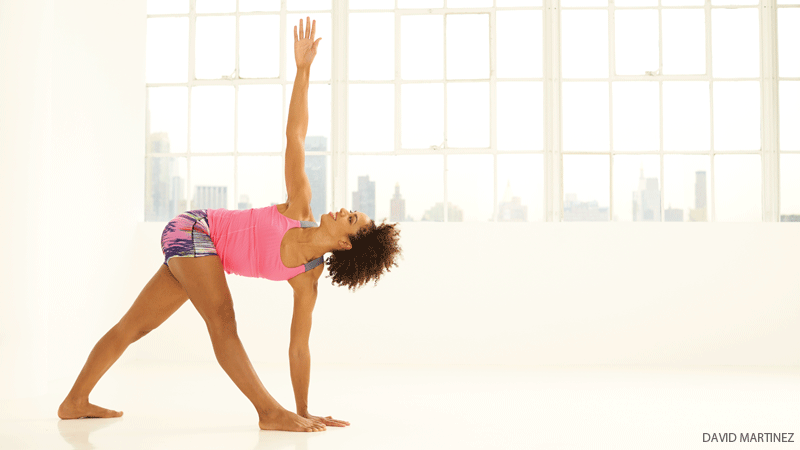
Rolf Gates originally based his sequencing on opening the five lines of the body in order (as presented in Tom Myer’s Anatomy Trains), organizing his classes into seven chapters: (1) centering, (2) warm-ups, (3) standing poses, (4) balancing poses, (5) backbends and inversions, (6) finishing poses, (7) Savasana.
As time passed and Gates’ 200-hour teacher trainings grew, he began to make the connections between the seven chapters in his sequencing and the seven chakras — realizing that the fascia lines of the body correlate to the meridians, which correlate to the nadis and chakras.
“The reality is that almost every class that works is flowing along the chakras,” explains Gates, who’s been teaching sequencing according to the chakras for the last 10 years. “I didn’t have to know anything about the chakras to arrive at a skillful class. I had to have the intention of skillful class, and holding that intention I arrived at the chakras.”
Now he thinks of sequencing in terms of opening the lines of connective tissue (the physiological component) as well as facilitating the chakras (the energetic and emotional component), organized in the same seven chapters as before. Examining the chakras and breaking down what they represent, Gates then uses language, postures, and cues to address the chakras and give students a fuller experience.
“In the heart moment of class, you open your heart to the truth (fourth chakra). In the backbend sequence, you surrender to it (fifth chakra). In the finishing poses, you reflect on the truth (sixth chakra,) and then in Savasana you become the truth (seventh chakra),” Gates explains.
Also see Sequencing Primer: 9 Ways to Plan a Yoga Class
Rolf Gates’s Chakra Sequencing Tips
Does all of that seem simple enough? Here’s the catch: Once a chakra has been expressed in a chapter of the sequence, Gates says that chakra’s qualities should be incorporated into the rest of class. In other words, you keep bringing these themes and qualities along. Take the first chakra for example: there needs to be grounding at the beginning of class as well as throughout the entire sequence. Gates purposefully uses Down Dog and Mountain Pose as re-grounding moments.
Therefore, in a 90-minutes class you’re incorporating earth for the entire 90 minutes, water for 85 minutes, fire for 60 minutes, heart for 45 minutes, throat for 30 minutes, reflection for 15 minutes, and realization for 5 to 10 minutes. “To be successful in a backbends you bring earth, you bring water, you bring fire, and you bring heart,” Gates says. “To be successful in Savasana you need the whole package.”
Word of Advice (Chakra sequencing isn’t for newbies.)
“I think the final piece to this is tremendous patience. You could take what I’ve given you and then you could spend three years, teaching five days a week to kind of figure it out for yourself. If you put pressure on yourself to try to enact it the following week, it’s going to cause a lot of pain and suffering,” attests Gates.
For newer teachers, he recommends starting by picking one thing, be it sequencing, alignment, or a group of poses (any aspect of class), and then spend six months becoming really good at teaching that one thing. Then work on the next thing and over the course of a few years you will become pretty good at teaching the physical aspects of class. Then you go deeper. The connections between the chakras and the sequencing of a skillful class will become more obvious over time.
7-Chapter Yoga Sequencing for the 7 Chakras
First Chapter: Centering
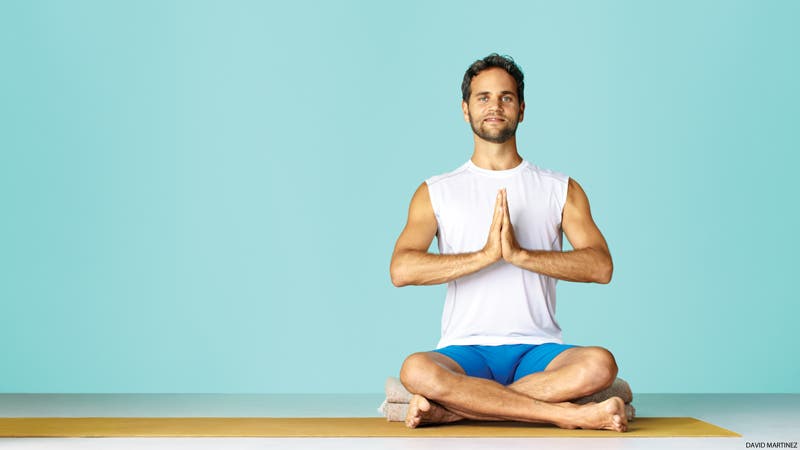
First Chakra: Stillness and Belonging
Centering at the beginning of class is meant to ground and address the issues that arise in the root chakra, which is associated with the element earth and feelings of stability, security, belonging, and coming home. Students need time to re-establish a sense of inner stillness and quietude in order to feel grounded, and they must feel safe before we ask them to open up and work hard.
“Once you’ve delivered the root chakra, you’ve got them — you have their buy in,” affirms Gates. “everyone comes home, everyone wants to come home and everyone feels the power of being allowed to come home.” He specifically uses the word “home” throughout class to connect students to their first chakra.
Also see Root Chakra Tune-Up Practice
Second Chapter: Warm-Ups
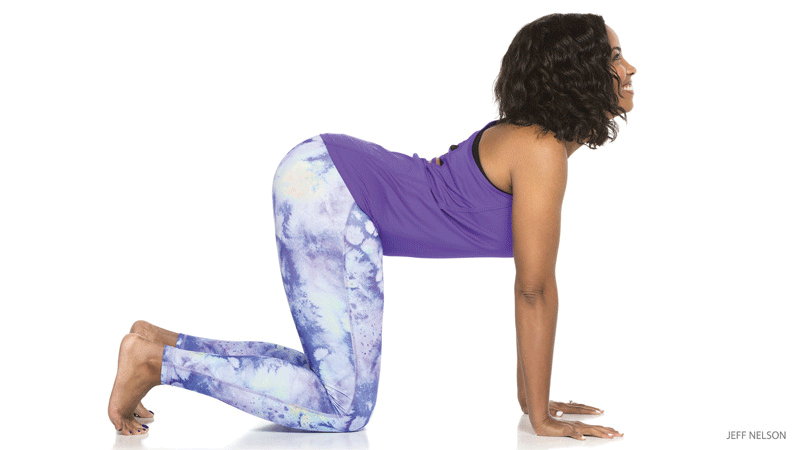
Second Chakra: Playfulness and Delight
During the warm-ups, Gates transitions into the second chakra with simple, repetitive, multi-joint movements, such as Cat/Cow. In other words, the class moves like water — the element associated with the sacral chakra.
The second chakra is also the center of pleasure, playfulness, creativity, and delight; therefore, along with repetitive, multi-joint movements, the second chapter of class should also be playful, fluid, and rhythmic. From a place of safety and belonging, students get to play in flow and delight and feel good in their bodies before really going to work.
Also see Sacral Chakra Tune-Up Practice
Third Chapter: Standing Poses

Third Chakra: Courage and Strength
The third chakra, or navel or solar plexus chakra, is the center of your personal power, confidence, strength, willpower and discipline — embodied in strong, powerful standing poses such as Warrior II and Revolved Triangle (the ultimate third chakra gut check). As teachers, we want to evoke courage and personal strength through the series of standing poses.
Also see Navel Chakra Tune-Up Practice
Fourth Chapter: Balancing Poses
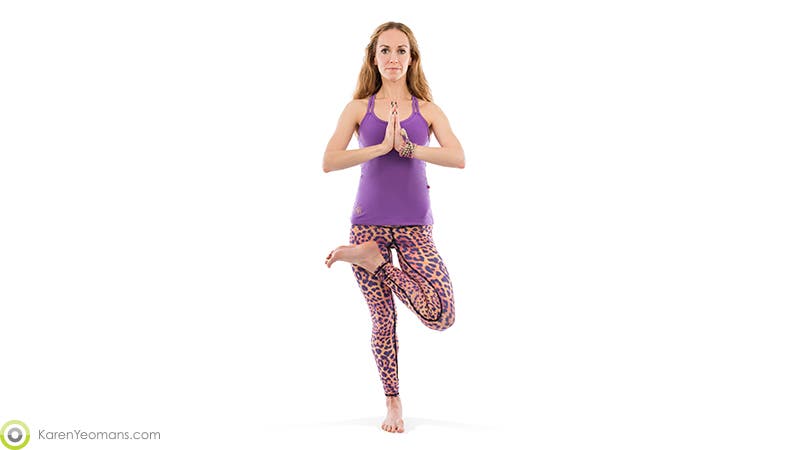
Fourth Chakra: Expansiveness and Heart
During the balancing segment of the sequence, Gates moves students into the heart chakra, associated with the element air and feelings of openness, compassion, love and joy. While heart-opening poses are the obvious choice for the fourth chakra, balancing poses express the air element, lightness of being and expansiveness.
It’s a timeless moment in class. The ultimate fourth chakra asana is Tree Pose with the arms spread out parallel to the earth, expressing the lateral axis of the heart chakra, or pulled together at heat’s center directing energy and attention there.
Also see Heart Chakra Tune-Up Practice
Fifth Chapter: Backbends and Inversions
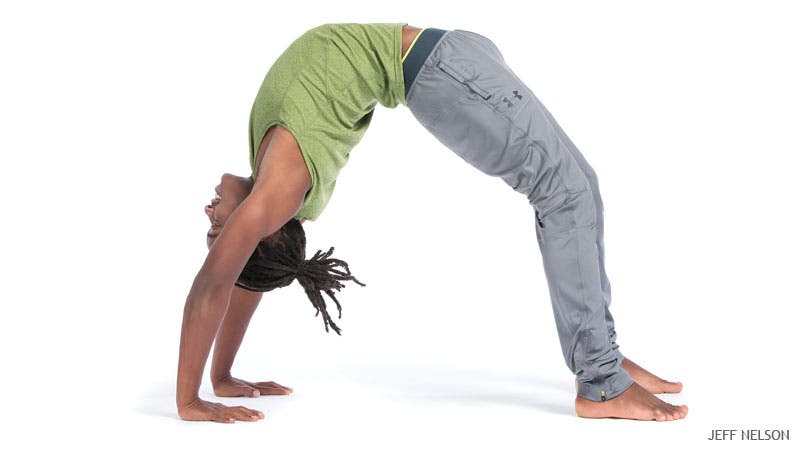
Fifth Chakra: Surrendering to the Truth
Following the triumphant moment of light, airy, balancing in Tree Pose comes the backbending part of class. The intensity kicks back up as students enter the throat chakra.
The fifth chakra is the center of vibration and sound, governing our ability to express what’s in our hearts as well as give our word to something. In backbends, the throat chakra is completely exposed and there’s a certain amount of vulnerability. (After all, doesn’t it feel vulnerable to speak your truth?)
Also see Throat Chakra Tune-Up Practice
Sixth Chapter: Finishing Poses
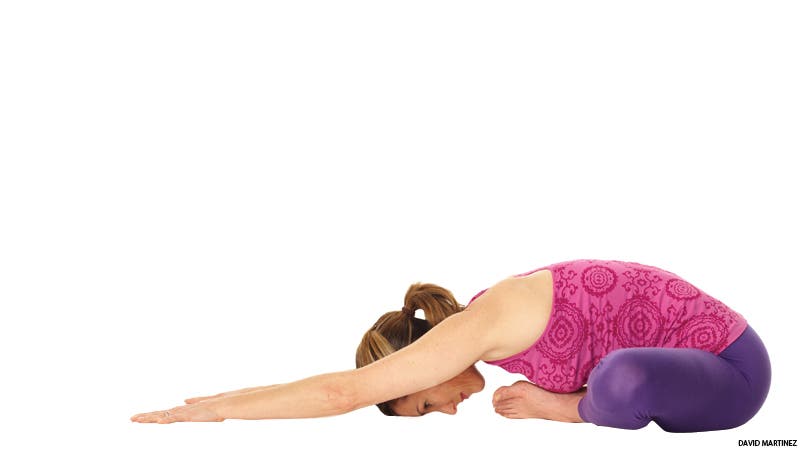
Sixth Chakra: Reflecting on the Truth
Finishing poses, such as seated hip openers and forward folds, are contemplative — turning us back into ourselves as we reflect on the experiences we’ve just had on the mat. It makes perfect sense to move the class into the third eye chakra, the center of awareness, intuition, wisdom, and realization, as the finishing chapter of the sequence.
Also see Third Eye Chakra Tune-Up Practice
Seventh Chapter: Savasana
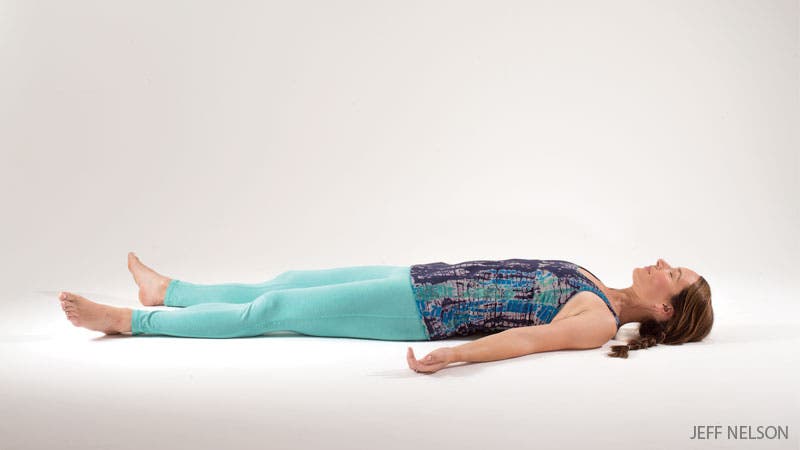
Seventh Chakra: Becoming the Truth
Ideally, in Savasana, boundaries dissolve and the yogi gets to experience a truer state of being. In a sense, we become the truth. The seventh or crown chakra represents our ability to fully connect spiritually, experiencing higher planes of consciousness, and deep connection with ourselves, which is what Savasana is all about.
“In the heart moment of class you open your heart to the truth (fourth chakra). In the backbend sequence you surrender to it (fifth chakra). In the finishing poses you reflect on the truth (sixth chakra) and then in Savasana you become the truth (seventh chakra),” Gates explains.
Also see Crown Chakra Tune-Up Practice